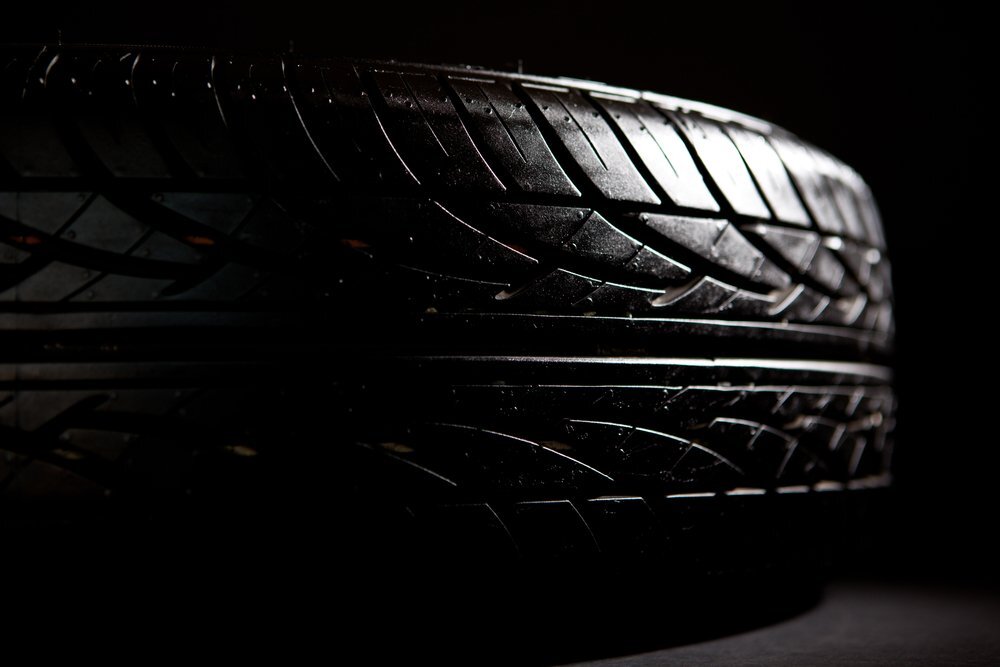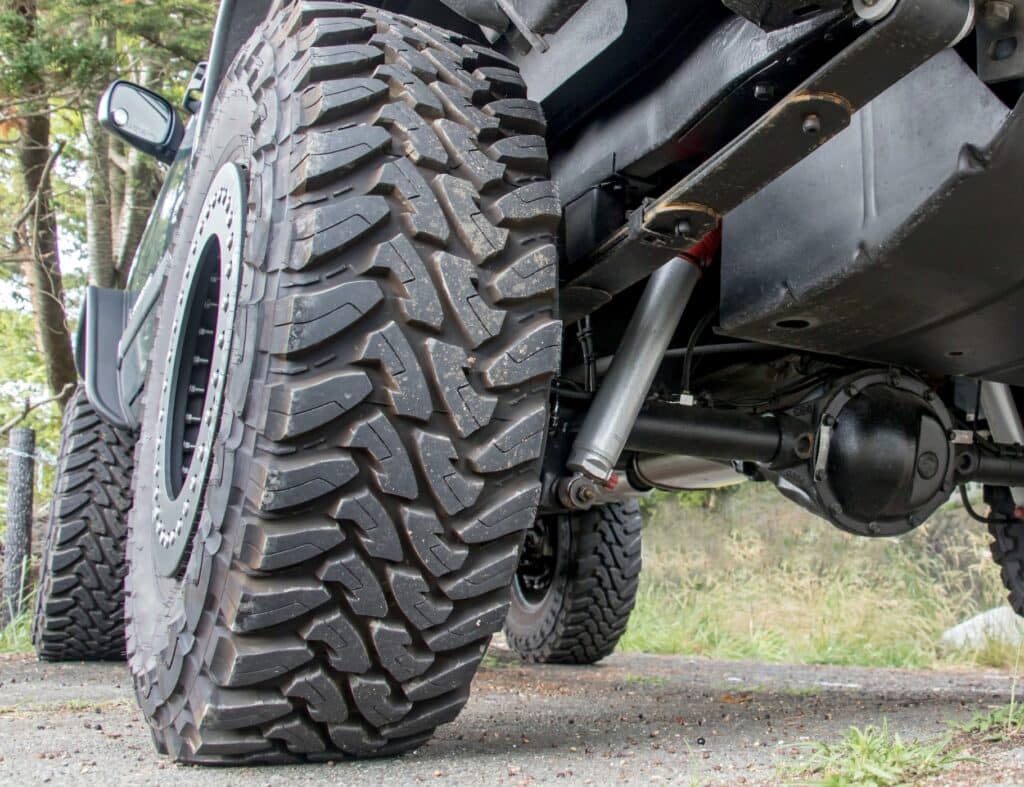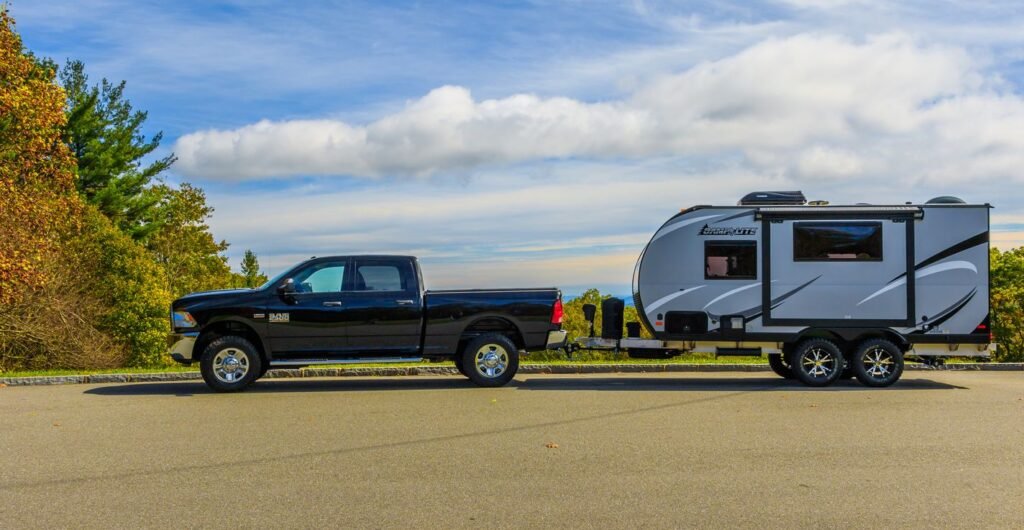To choose tires for towing, consider the load rating and durability. Ensure they are specifically designed for towing purposes.
Selecting the right tires for towing is crucial for safety and performance. Tires designed for towing have a higher load rating and improved durability. These features help manage the additional weight and stress. Look for tires with reinforced sidewalls to prevent blowouts.
Tread patterns that provide better traction are essential. Proper tire selection ensures stability and reduces the risk of accidents. Always consult the vehicle’s manual for recommended specifications. Investing in quality towing tires increases your towing experience and safeguards your journey.
Tire Basics
Choosing the right tires for towing is crucial for safety and performance. Understanding tire basics can help you make an informed decision. This section covers the essential aspects of tires, focusing on types and components.
Types Of Tires
There are different types of tires suitable for towing. Each type has its own unique features:
- All-Season Tires: These are versatile and can handle various weather conditions. They are a good choice for mild climates.
- All-Terrain Tires: Perfect for both on-road and off-road conditions. They offer better traction on different surfaces.
- Highway Tires: Designed for smooth highways, these tires provide a comfortable ride and better fuel efficiency.
- Trailer Tires: Specifically made for trailers, these tires support heavy loads and maintain stability.
Tire Components
Understanding tire components helps in choosing the right tires for towing. Here are the main parts:
| Component | Description |
|---|---|
| Tread | The rubber part that contacts the road. It provides grip and traction. |
| Sidewall | The side part of the tire. It provides lateral stability and absorbs shocks. |
| Bead | The part that contacts the wheel rim. It ensures the tire stays in place. |
| Belt | Located under the tread, it provides strength and durability. |
| Carcass | The tire’s body, made up of layers of fabric. It provides structure. |
Knowing these components helps in understanding tire functionality. It ensures you pick the best tires for towing needs.

Load Ratings
Choosing the right tires for towing is essential. One crucial aspect is understanding load ratings. Load ratings determine how much weight a tire can safely support. This guide will help you understand load ratings better.
Understanding Load Index
The load index is a numerical code. It indicates the maximum load a tire can carry. For example, a load index of 90 means the tire can support 1,323 pounds. Higher numbers mean a greater load capacity.
| Load Index | Weight Capacity (lbs) |
|---|---|
| 85 | 1,135 |
| 90 | 1,323 |
| 95 | 1,521 |
Importance Of Load Range
Load range indicates a tire’s strength and durability. It is represented by letters like C, D, or E. A higher load range means the tire can handle more weight and pressure.
- Load Range C: Perfect for light-duty towing.
- Load Range D: Suitable for medium-duty towing.
- Load Range E: Best for heavy-duty towing.
Choosing the right load index and load range ensures safe and efficient towing. Always check your vehicle’s manual for recommended tire specifications.
Tread Patterns
Choosing the right tires for towing involves understanding tread patterns. The tread pattern impacts how your tires perform on different surfaces. Different tread designs offer unique benefits and drawbacks. Understanding these will help you make an informed decision.
Tread Design Types
There are three main types of tread designs: symmetrical, asymmetrical, and directional.
| Tread Design | Features | Best For |
|---|---|---|
| Symmetrical | Uniform tread blocks | General use |
| Asymmetrical | Different patterns on each side | Performance and stability |
| Directional | V-shaped grooves | Wet conditions |
Impact On Performance
Symmetrical tread patterns offer a smooth ride. They work well for highway driving and light towing.
Asymmetrical tread patterns provide better grip. They are perfect for towing heavy loads and long distances.
Directional tread patterns excel in wet conditions. They help prevent hydroplaning and ensure better traction.
Consider these tread patterns when choosing tires for towing. Each type offers unique benefits. Select the one that matches your towing needs.

Tire Size
- Choosing the right tire size is crucial for safe towing. The correct size ensures stability, performance, and safety. This section will guide you through understanding and selecting the proper tire size for your towing needs.
Reading Tire Size
Tire size is indicated on the tire’s sidewall. This information is often written in a format like P215/65R15. Here’s how to read it:
- P: Indicates the tire is for passenger vehicles.
- 215: The tire width in millimeters.
- 65: Aspect ratio, the height compared to the width.
- R: Radial construction type.
- 15: Diameter of the wheel in inches.
Choosing The Right Size
Choosing the right tire size involves knowing your vehicle’s specifications. Refer to the vehicle’s manual for recommended sizes. Towing requires tires that can handle extra weight and stress.
| Vehicle Type | Recommended Tire Size |
|---|---|
| Small SUV | P215/65R16 |
| Pickup Truck | P265/70R17 |
| Large SUV | P275/55R20 |
Consider the following tips:
- Check tire load rating for towing capacity.
- Match tire size with the axle ratio of your vehicle.
- Ensure the tire fits the wheel well without rubbing.
Using the correct tire size will improve towing safety and performance. Always replace tires with the manufacturer’s recommended size. This prevents issues related to mismatched tire dimensions.
Durability
When choosing tires for towing, durability is a key factor. Towing places extra stress on tires, so they must be tough. Strong, durable tires ensure safety and performance.
Materials And Construction
The materials and construction of a tire influence its durability. Tires made with high-quality rubber compounds resist wear and tear. Consider tires with reinforced sidewalls. These resist punctures and blowouts.
Check for steel belts in the tire construction. Steel belts add strength and durability. They help the tire maintain shape under heavy loads. Look for nylon cap plies. These add another layer of durability.
Wear And Tear
Durable tires resist wear and tear better. They have deeper treads that last longer. Look for tires with a high treadwear rating. This rating shows how long the tire should last.
Consider tires with special tread patterns. These patterns distribute weight evenly. Even weight distribution reduces wear. Regularly check your tires for signs of wear. Replace them when the tread is low.
| Feature | Benefits |
|---|---|
| High-Quality Rubber | Resists wear and tear |
| Reinforced Sidewalls | Prevents punctures and blowouts |
| Steel Belts | Maintains shape under heavy loads |
| Nylon Cap Plies | Extra durability |
| High Treadwear Rating | Longer-lasting tread |
By focusing on these features, you ensure your tires are durable. Durable tires are key for safe and efficient towing.

Seasonal Considerations
Choosing the right tires for towing is crucial. Each season demands different tire features. This section covers how to select the best tires based on the season.
All-season Tires
All-season tires work well year-round. They handle both wet and dry conditions. These tires provide a balance between performance and comfort. They are perfect for mild climates. If you tow in moderate weather, these tires are a solid choice.
Winter And Summer Tires
Winter tires are designed for snow and ice. They have special tread patterns. These patterns provide better grip in cold conditions. If you tow in snowy areas, winter tires are essential. They offer improved safety and control.
Summer tires perform best in warm weather. They offer better traction on dry roads. These tires have fewer grooves, which means more rubber on the road. This improves handling and braking. If you tow in hot climates, summer tires are the way to go.
| Type of Tire | Best Season | Key Features |
|---|---|---|
| All-Season Tires | Year-Round | Balanced performance, good for mild climates |
| Winter Tires | Winter | Better grip on snow and ice |
| Summer Tires | Summer | Improved traction and braking on dry roads |
Fuel Efficiency
Choosing the right tires for towing can improve fuel efficiency. The right tires reduce fuel consumption and save money. Let’s explore how you can make the best choice.
Rolling Resistance
Rolling resistance is the effort needed to roll the tire. Lower rolling resistance means less fuel used. Choose tires with low rolling resistance for better fuel efficiency.
Here are some tips to find tires with low rolling resistance:
- Check the tire label for rolling resistance ratings.
- Select tires designed for fuel efficiency.
- Maintain the correct tire pressure.
Eco-friendly Options
Eco-friendly tires help save fuel and protect the environment. These tires use special materials and designs to reduce fuel consumption.
Consider these factors when choosing eco-friendly tires:
- Look for tires made from sustainable materials.
- Check for eco-friendly certifications and labels.
- Choose tires with a longer lifespan to reduce waste.
Here’s a table to compare some popular eco-friendly tire options:
| Tire Brand | Eco-Friendly Features | Fuel Efficiency Rating |
|---|---|---|
| Brand A | Sustainable materials, long lifespan | High |
| Brand B | Low rolling resistance, recycled materials | Medium |
| Brand C | Eco-friendly tread design | High |
Choosing the right tires can make a big difference. Save fuel and help the environment with smart tire choices.
Maintenance Tips
Maintaining your tires is crucial for safe and efficient towing. Proper care ensures longevity and performance. Follow these tips to keep your tires in top condition.
Proper Inflation
Keeping your tires properly inflated is vital. Under-inflated tires can lead to poor fuel economy. Over-inflation can cause uneven wear.
Use a quality tire gauge to check pressure. Do this at least once a month. Refer to your vehicle’s manual for the recommended pressure.
Inflate your tires to the suggested PSI. This ensures optimal performance and safety.
Regular Inspections
Regular inspections help identify issues early. Look for cuts, punctures, and uneven wear.
Check tire tread depth. Use a tread depth gauge or a coin. Replace tires if the tread is too low.
Inspect sidewalls for cracks and bulges. These can indicate internal damage. If found, replace the tire immediately.
| Inspection Item | Frequency | Action |
|---|---|---|
| Tire Pressure | Monthly | Check and adjust PSI |
| Tread Depth | Quarterly | Use a gauge or coin |
| Sidewalls | Monthly | Inspect for damage |
Following these maintenance tips will keep your tires in great shape. This ensures safe and efficient towing.
Frequently Asked Questions
What Load Range Tire Is Best For Towing?
Load Range E tires are best for towing. They offer higher load capacity, durability, and stability, ensuring safe towing.
Are Lt Tires Required For Towing?
Yes, LT tires are recommended for towing. They offer better load capacity, stability, and durability compared to regular tires.
Do You Need 10 Ply Tires For Towing?
For towing, 10-ply tires are recommended. They offer better stability, load capacity, and durability. Ensure your vehicle’s specifications match tire requirements.
Do Tires Make A Difference In Towing?
Yes, tires significantly impact towing performance. Proper tires ensure stability, safety, and better handling. Choose tires designed for towing for optimal results.
Conclusion
Choosing the right tires for towing ensures safety and efficiency. Always consider load capacity, tire type, and tread pattern. Research thoroughly and consult professionals if needed. Proper tire maintenance also extends their lifespan. Make informed decisions for a smoother towing experience.
Stay safe on the road with the perfect set of tires.





















